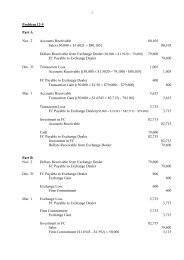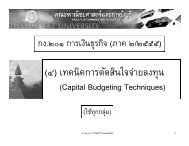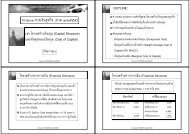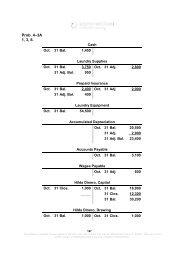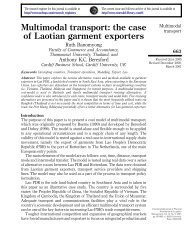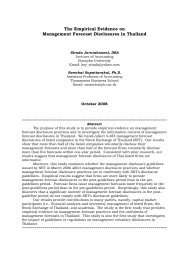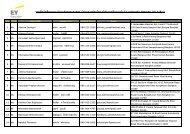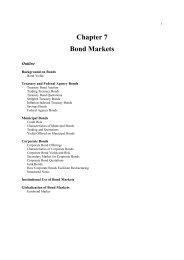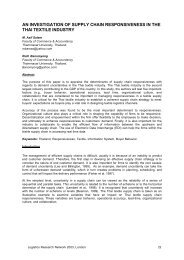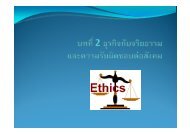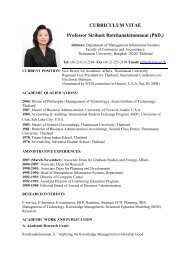The Role of Communication Strategies in Change Management ...
The Role of Communication Strategies in Change Management ...
The Role of Communication Strategies in Change Management ...
Create successful ePaper yourself
Turn your PDF publications into a flip-book with our unique Google optimized e-Paper software.
Somboon Kulvisaechana<br />
effectiveness and efficiency – for both message senders and receivers; they are those that<br />
provide perceived quality to communication processes.<br />
2.2.2.4 Channel <strong>of</strong> <strong>Communication</strong><br />
Channels <strong>of</strong> communication are regarded as the vessels <strong>of</strong> the message delivery (Anonymous,<br />
2000). Accord<strong>in</strong>g to the literature, they have been broadly discussed <strong>in</strong> the notion <strong>of</strong> the flow<br />
<strong>of</strong> <strong>in</strong>formation (Johnson et al., 1994) and <strong>in</strong>formation richness (Kreitner and K<strong>in</strong>icki, 1995).<br />
Editorial tone and communication potentials are <strong>of</strong> important characteristics determ<strong>in</strong><strong>in</strong>g the<br />
flow <strong>of</strong> <strong>in</strong>formation (Johnson et al., 1994). Basically, editorial tone mirrors an <strong>in</strong>dividual’s<br />
perception <strong>of</strong> the credibility and trustworth<strong>in</strong>ess <strong>of</strong> the source, which has an impact on the<br />
upward flow <strong>of</strong> <strong>in</strong>formation <strong>in</strong> the organizations (Glauser, 1984). Whereas communication<br />
potential refers to “an <strong>in</strong>dividual’s perception <strong>of</strong> the manner <strong>in</strong> which <strong>in</strong>formation is<br />
presented.” (Johnson et al., 1994: p. 114) This is relat<strong>in</strong>g to issues <strong>of</strong> styles and<br />
comprehension <strong>of</strong> the documents, such as newsletters.<br />
Information richness is the amount <strong>of</strong> <strong>in</strong>formation carried out between senders to receivers to<br />
reach a common understand<strong>in</strong>g (Carlson and Davis, 1998). Media that are high <strong>in</strong><br />
<strong>in</strong>formation richness are capable <strong>of</strong> transmitt<strong>in</strong>g more <strong>in</strong>formation and are more likely to<br />
generate a common understand<strong>in</strong>g than are media that are low <strong>in</strong> richness (George and Jones,<br />
1998). For example, if a w<strong>in</strong>k provides substantial new understand<strong>in</strong>g, it would be<br />
considered rich (Kreitner and K<strong>in</strong>icki, 1995; Daft, 1984). Thus, select<strong>in</strong>g the proper medium<br />
significantly impacts the receiver’s perception and acceptance <strong>of</strong> the message (Weiss, 2001).<br />
Kreitner and K<strong>in</strong>icki (1995) propose the cont<strong>in</strong>gency model for select<strong>in</strong>g media, which is<br />
graphically depicted <strong>in</strong> Figure 7, can help the sender to balance between the choice <strong>of</strong><br />
communication medium and the complexity <strong>of</strong> situations. <strong>The</strong> model also illustrates other<br />
communication problems where the messages transmitted through an <strong>in</strong>appropriate medium<br />
<strong>of</strong> communication may result <strong>in</strong> <strong>in</strong>formation overload or <strong>in</strong>formation <strong>in</strong>adequacy (Shelby,<br />
1998). Notably, effective communication occurs when the richness <strong>of</strong> the medium is<br />
properly matched with the <strong>in</strong>tricateness <strong>of</strong> the problem or situation.<br />
As for the above constructs, some empirical evidence on communication strategies,<br />
especially associated with the issue <strong>of</strong> change, are discussed. In the work <strong>of</strong> Lewis (1999), it<br />
is suggested that general <strong>in</strong>formational meet<strong>in</strong>gs and small <strong>in</strong>formal discussions are the most<br />
common channels for dissem<strong>in</strong>at<strong>in</strong>g <strong>in</strong>formation regard<strong>in</strong>g change; l<strong>in</strong>e supervisors are rarely<br />
20



